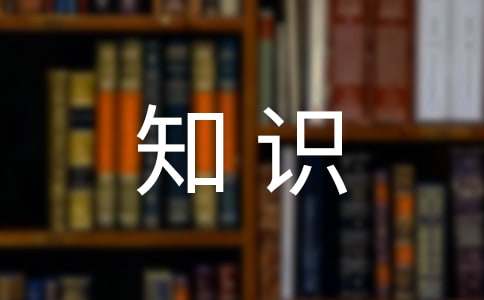小學英語基礎知識大全
導語:小學的英語知識注重的是基礎,對于英語的從句和其他進階要求不高,以下是小編為大家精心整理的小學英語基礎知識大全,歡迎大家參考!

一般現在時基本用法介紹
一般現在時的功能:
1.表示事物或人物的特征、狀態。如:The sky is blue.天空是藍色的。
2.表示經常性或習慣性的動作。如:I get up at six every day.我每天六點起床。
3.表示客觀現實。如:The earth goes around the sun.地球繞著太陽轉。
一般現在時的構成:1. be動詞:主語+be(am, is, are)+其它。如:I am a boy.我是一個男孩。
注意:(我用am,你用are,三單is,復數are。)
行為動詞:
主語+行為動詞(+其它)
如:We study English.我們學習英語。
注意:(當主語為第三人稱單數(he, she,it)時,要在動詞后加"-s"或"-es"。如:Mary likes Chinese.瑪麗喜歡漢語。)
一般現在時的變化:
1. be動詞的變化。
肯定句:主語+be+其它
He is a worker. 他是工人。
否定句:主語+ be + not +其它。
He is not a worker.他不是工人。
一般疑問句:Be +主語+其它。
(be動詞移到句首)
如:I am a student.
-Are you a student?
-Yes. I am. / No, I'm not.
特殊疑問句:疑問詞+一般疑問句。
如:My bike is under the tree.
Is your bike under the tree?
Where is your bike?
2.行為動詞的變化。
肯定句:主語+動詞原形(+其它)。
否定句:主語+ don't( doesn't ) +動詞原形(+其它)。
如:I like bread. I don't like bread.
當主語為第三人稱單數時,要用doesn't構成否定句。
如:He ofter plays football.
He doesn't often play football.
一般疑問句:Do( Does ) +主語+動詞原形+其它。(句首加助動詞do, does)
如:I often play football.
- Do you often play football?
- Yes, I do. / No, I don't.
當主語為第三人稱單數時,要用does構成一般疑問句。
如:She goes to school by bike.
- Does she go to school by bike?
- Yes, she does. / No, she doesn't.
特殊疑問句:疑問詞+一般疑問句。
如:She goes to school by bike.
Does she go to school by bike?
How does she go to school?
動詞+s的變化規則
1.一般情況下,直接加-s,如:cook-cooks, milk-milks
2.以s. x. sh. ch. o結尾,加-es,如:guess-guesses, wash-washes, watch-watches, go-goes
3.以“輔音字母+y”結尾,變y為i, 再加-es,如:study-studies
現在進行時
1.現在進行時表示現在正在進行或發生的動作,也可表示當前一段時間內的活動或現階段正在進行的動作。(句中一般含有now, look, listen.)
2.現在進行時的肯定句基本結構為be+動詞ing.
如:Tom is reading books in his study .
3.現在進行時的否定句在be后加not。
如:Tom is reading books in his study .
Tom is not reading books in his study .
4.現在進行時的一般疑問句把be動詞調到句首。
如:Tom is reading books in his study .
Is Tom reading books in his study ?
5.現在進行時的特殊疑問的基本結構為:疑問詞+一般疑問句?
(注意:當劃線部分包含謂語動詞時,用疑問詞代替劃線部分放到句首,原劃線處應加上doing)
如:Tom is reading books in his study .
Tom is reading books in his study .
Is Tom reading books in his study ?
Is Tom reading books in his study ?
What is Tom doing in his study?
Where is Tom reading books?
動詞加ing的變化規則
1.一般情況下,直接加ing,如:cook-cooking
2.以不發音的e結尾,去e加ing,如:make-making, taste-tasting
3.如果末尾是輔音字母加一個元音字母和一個輔音字母,雙寫末尾的輔音字母,再加ing,如:run-running, stop-stopping
【小學英語基礎知識】相關文章:
小學英語基礎知識03-08
小學英語語法基礎知識03-19
小學英語基礎知識學習:單詞分類匯總03-18
小學英語基礎知識整理:133組英語反義詞03-18
學好英語必會的基礎知識03-08
英語基礎知識的學習方法03-08
英語語法基礎知識點03-09
英語語法基礎知識有哪些05-31
小學語文作文基礎知識03-03